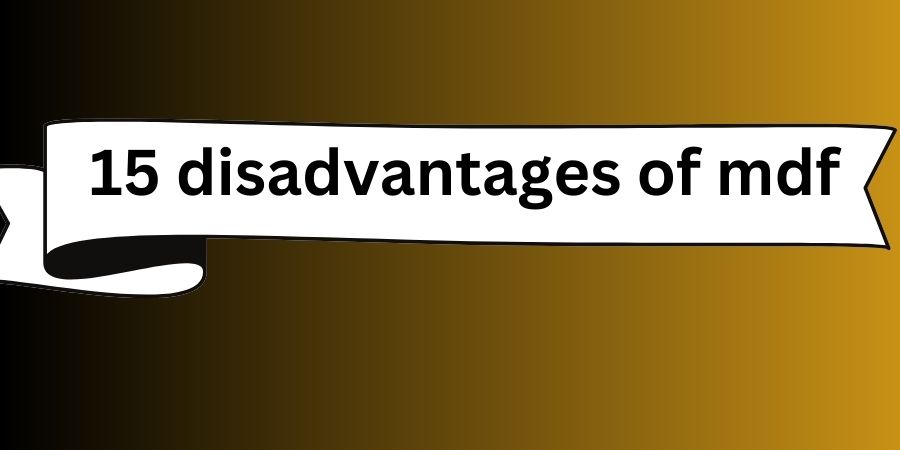MDF (Medium Density Fiberboard) is made from wood fibers that are glued together under high pressure and heat. While MDF has several benefits and uses, there are some downsides that you should be aware of.
Here are 15 disadvantages of MDF, make sure to read them before making your choice.
Moisture damage:
MDF is made from wood fibers that are bonded together with glue and heat, which makes it vulnerable to moisture damage. When it’s exposed to water or high humidity, the fibers can absorb the moisture and cause the MDF to swell or warp. This can cause the material to become distorted or unusable, and can also lead to the growth of mold and mildew.
Swelling and warping:
As mentioned, MDF can swell and warp when it absorbs moisture. This can cause the material to become distorted, making it difficult to use in certain applications. Additionally, once MDF has swelled or warped, it cannot be easily restored to its original shape.
Easily scratches:
MDF has a soft surface that can be easily scratched or dented. This can be a problem if you’re using it for furniture or other applications where it will be subject to wear and tear. Additionally, once it’s scratched, it cannot be easily repaired.
Not suitable for heavy loads:
MDF is not as strong as solid wood or plywood, which makes it unsuitable for applications that require a lot of weight-bearing capacity. If you need a material for heavy-duty applications, it may be better to use a stronger material like solid wood or plywood.
Not heat resistant:
MDF can be damaged by heat, which makes it unsuitable for use in areas where it will be exposed to high temperatures. If you need a material for areas like kitchens or fireplaces, it may be better to use a heat-resistant material like tile or stone.
Cannot be stained:
MDF does not have a natural grain pattern like wood, which means that it cannot be stained to look like wood. While it can be painted, the surface will not look as natural as wood.
Formaldehyde content:
Some MDF products contain formaldehyde, which is a carcinogenic substance that can be harmful to human health. Exposure to formaldehyde can cause irritation of the eyes, nose, and throat, and may also cause respiratory problems or cancer. To reduce the risk of exposure, it’s important to choose low-emission MDF products.
Not durable:
MDF is not as durable as solid wood or plywood, which makes it unsuitable for outdoor applications or areas where it will be exposed to harsh conditions. If you need a material for outdoor use, it may be better to use a more durable material like pressure-treated wood or composite decking.
Difficult to repair:
MDF cannot be easily repaired like wood or plywood. If it’s damaged, it may need to be replaced rather than repaired. This can be a problem if you’re using MDF for furniture or other applications where it’s subject to wear and tear.
Not environmentally friendly:
While MDF is made from wood fibers, it’s not considered an environmentally friendly material because it’s often made from wood waste and may contain formaldehyde. Additionally, MDF cannot be easily recycled or reused.
Edges require finishing:
The edges of MDF are not as smooth as wood, which means that they require finishing to create a smooth surface. This can add to the cost and time required to use MDF in certain applications.
Heavy:
MDF is heavier than wood or plywood, which makes it difficult to handle and transport. This can be a problem if you’re using MDF for large applications like building construction.
Limited availability:
MDF is not as widely available as wood or plywood, which can make it difficult to find in certain areas. Additionally, some specialty MDF products may be expensive or difficult to source.
Not resistant to termites:
MDF is not resistant to termites or other wood-destroying insects, which can be a problem in areas where these pests are common. If you need a material for outdoor use or in areas where termites are a concern, it may be better to use a material that is treated to resist pests.
Limited fire resistance:
MDF is not naturally fire-resistant, which means that it can easily catch fire and spread flames. This can be a concern in areas where fire safety is a priority. To reduce the risk of fire, it’s important to use MDF that has been treated with fire-retardant chemicals or to choose a different material that is naturally fire-resistant.





